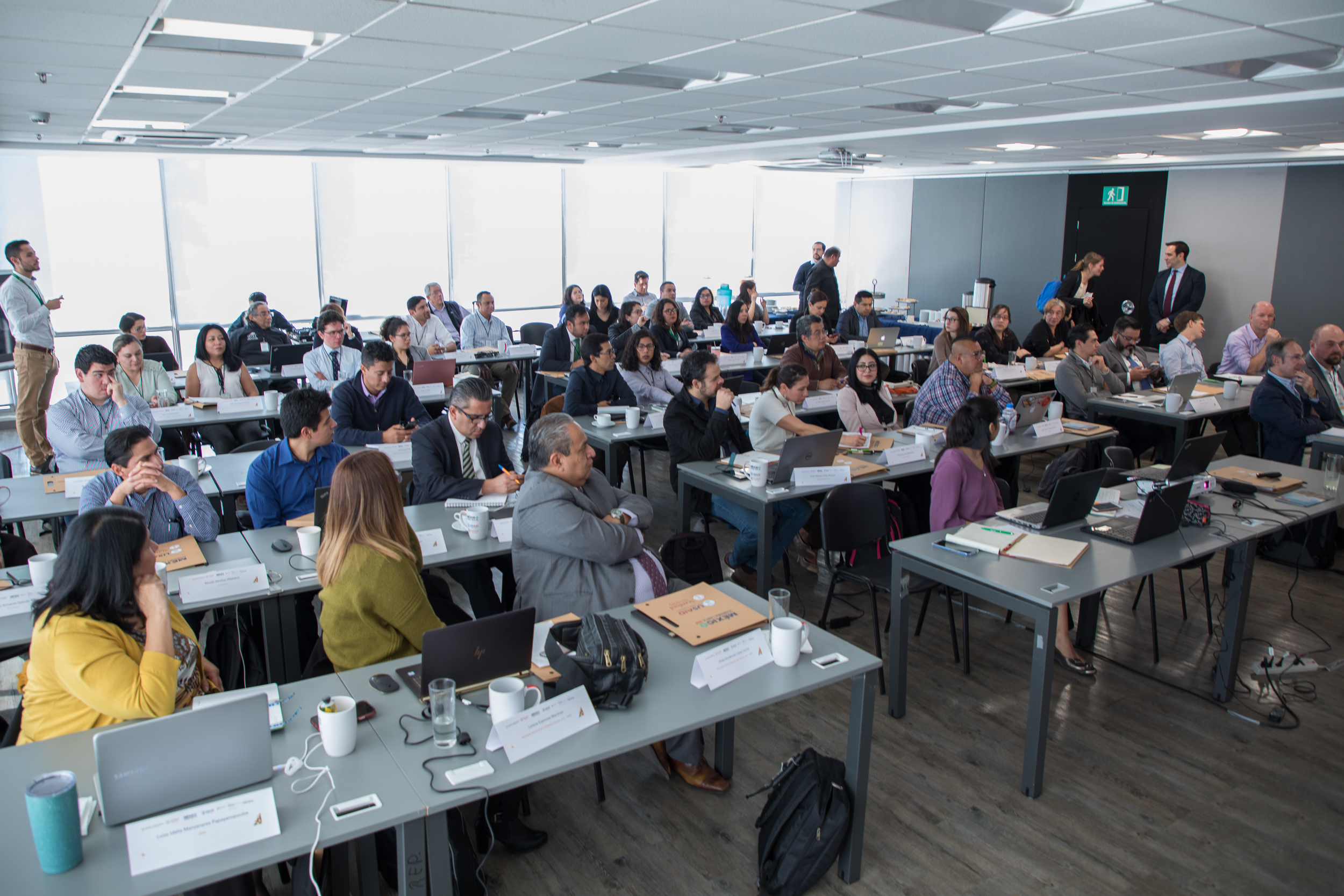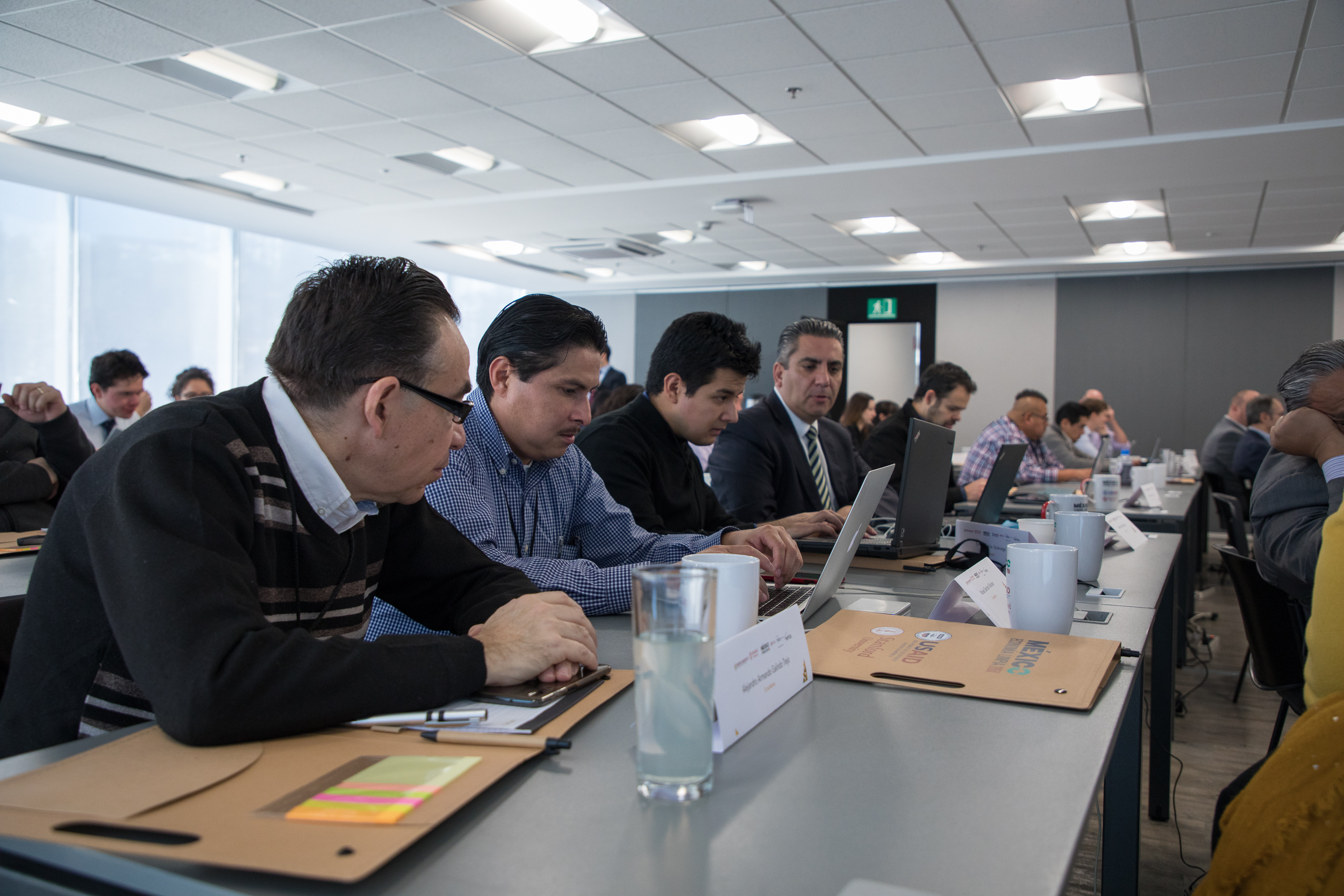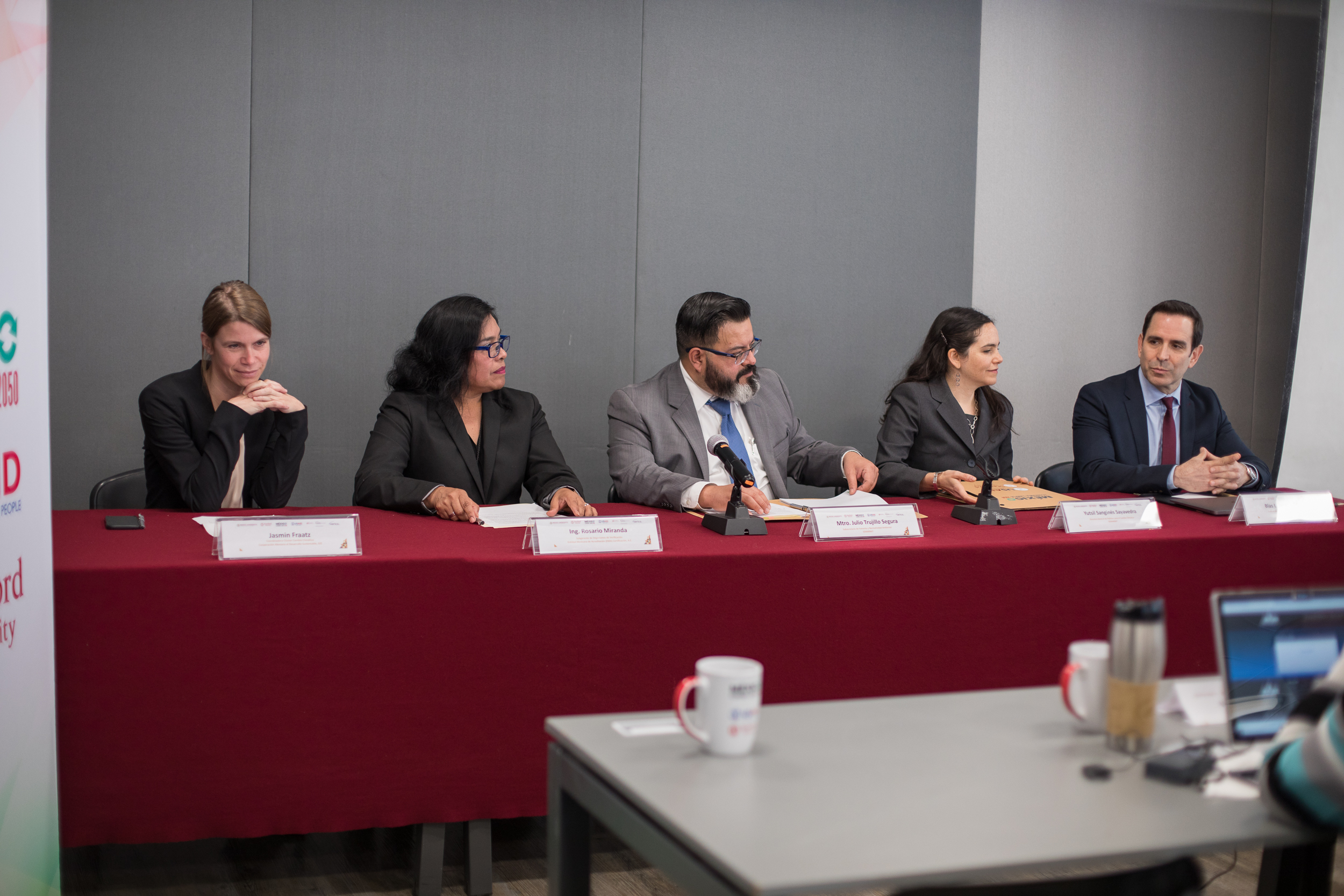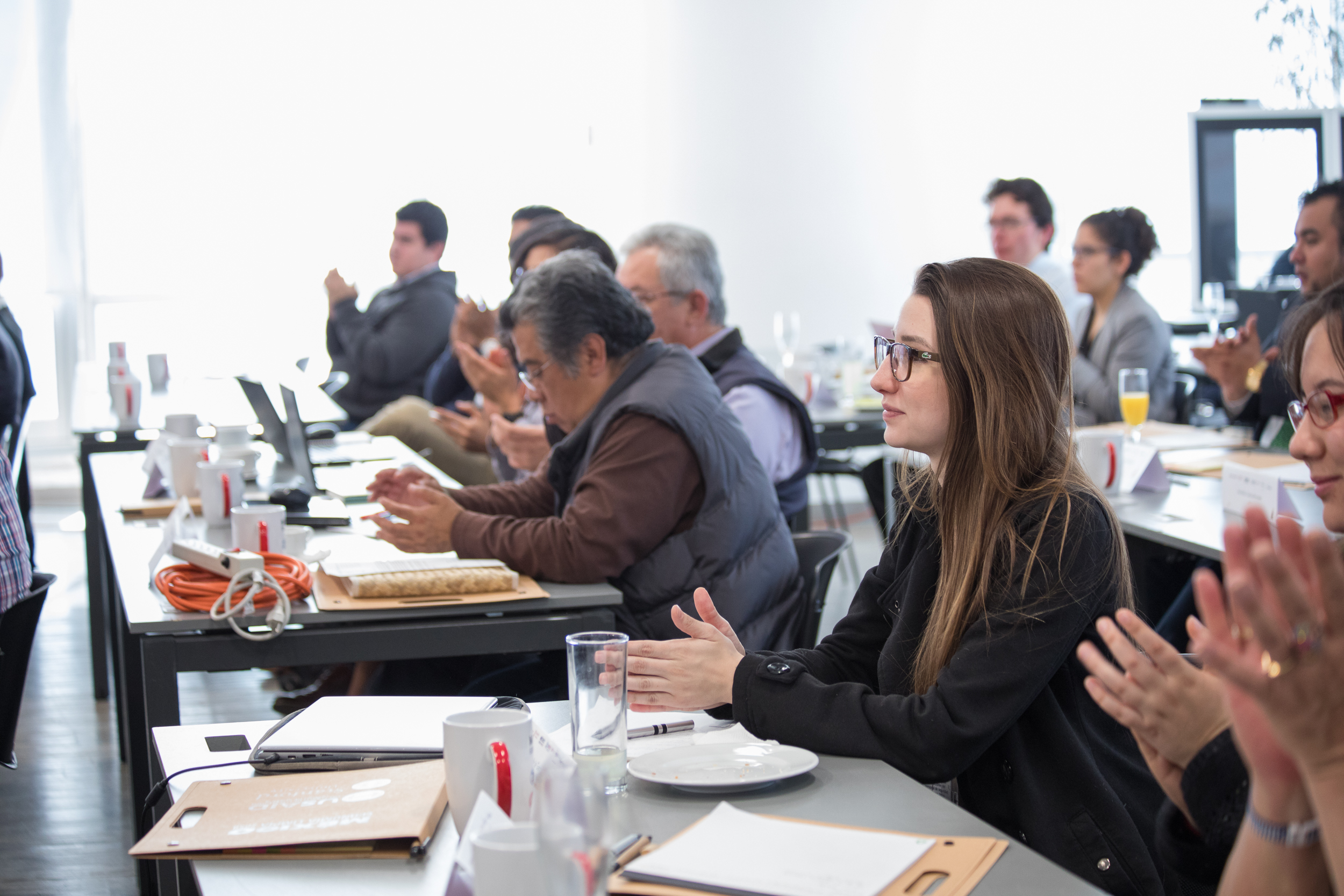The Deutsche Gesellschaft für Internationale Zusammenarbeit (GIZ) GmbH, at the request of Germany’s Federal Ministry for the Environment, Nature Conservation and Nuclear Safety (BMU), co-organized an event about good international verification processes for greenhouse gas (GHG) emissions within the framework of the Emissions Trading System (ETS). This workshop took place within the project “Preparation of an Emissions Trading System in Mexico” (SiCEM) alongside the “México Economía Limpia” alliance from Stanford University and USAID. The course included the participation of experts in monitoring, reporting, and verification (MRV) from the European Union and California; they shared some of their challenges and learning from years of experience within their respective jurisdictions.
The course’s inauguration was presided by Professor Julio Trujillo (Undersecretary of Development and Environmental Regulation at SEMARNAT), Yutsil Sanginés Sayavedra (General Director of Climate Change Policy at SEMARNAT), Jasmin Fraatz (Coordinator of the GIZ Climate Change Cluster), Blas L. Pérez-Henríquez (Director of the “México Economía Limpia 2050” alliance) and Rosario Miranda (Assistant Director of the Certifying Agencies at EMA, the Mexican Accreditation Body). They all highlighted the importance of international cooperation in order to share good practices from countries and programs with experience in GHG verification.
The course took place from the 27th to the 31st of January 2020 and brought together participants from the Certification, Verification, and Validation Agencies (OC-VV), the Mexican Accreditation Body (EMA), the Federal Bureau of Environmental Protection (PROFEPA), and the Ministry of the Environment and Natural Resources (SEMARNAT), among others. During five days of training, experts from the California Air Resources Board (CARB) and Verico SCE updated the participants on topics such as accreditation of verifying agencies, and the revision and monitoring of verifications. Likewise, they placed emphasis on the verification processes of sectors such as energy, cement, and steel.
With this kind of training, it is expected that key actors for the Pilot Program for the Emissions Trading System – such as these verifiers – develop the skills for solid verification of GHG emissions at the participating installations.
Presentations at the Event (in Spanish)
Day 1
1 European Union Accreditation Process
1_2_Comparisons between Accreditation Systems
1_ Accreditation of GHG Verification Agencies: Accreditation processes in the USA and Canada
2 Accreditation: Qualification Criteria for Qualification Verifiers: EU functioning
3 Monitoring of GHG 1. Basic concepts and EU Regulations
3_Monitoring of Greenhouse Gases Comparative Monitoring Plan
3_ Reporting Protocol for the Voluntary Report Program
4 Monitoring of GEI 1: Activity details, Calculation and Uncertainty Factors
4_Monitoring of Greenhouse Gas Effects. Addressing Uncertainties
4_Reporting Protocol for the Voluntary Report Program
5 Verification Criteria. Concept and Materiality
5_ Materiality Verification Criteria
Verico SCE. Presentation of the Cooperative
Accreditation of GHG Verification Agencies: Accreditation processes in the USA and Canada
Session 3. Reporting Protocol for the Voluntary Report Program
Session 4. Reporting Protocol for the Voluntary Report Program
Day 2
6_10_ Accreditation of GHG Verification Organisms: Accreditation processes in the USA and Canada
6_ Verification Process. Contract revision
7_ Verification Process. Strategic Analysis and Roles
7_ Verification Process. Strategic Analysis and CoI
7_ Verification Process. Conflict of interest
8 Verification Process. Risk Analysis and Verification Plan. Verification Process
9_ Verification Plan and Risk Analysis
9_USA-Canada Risks. Government Risk Evaluation in Alberta, Canada
10 GIZ Verification Process. Findings and Report
10_ Verification Process. Verification Report. Non-Compliances Treatment
Session 6 – Verification Process. Strategic Analysis and CoI







